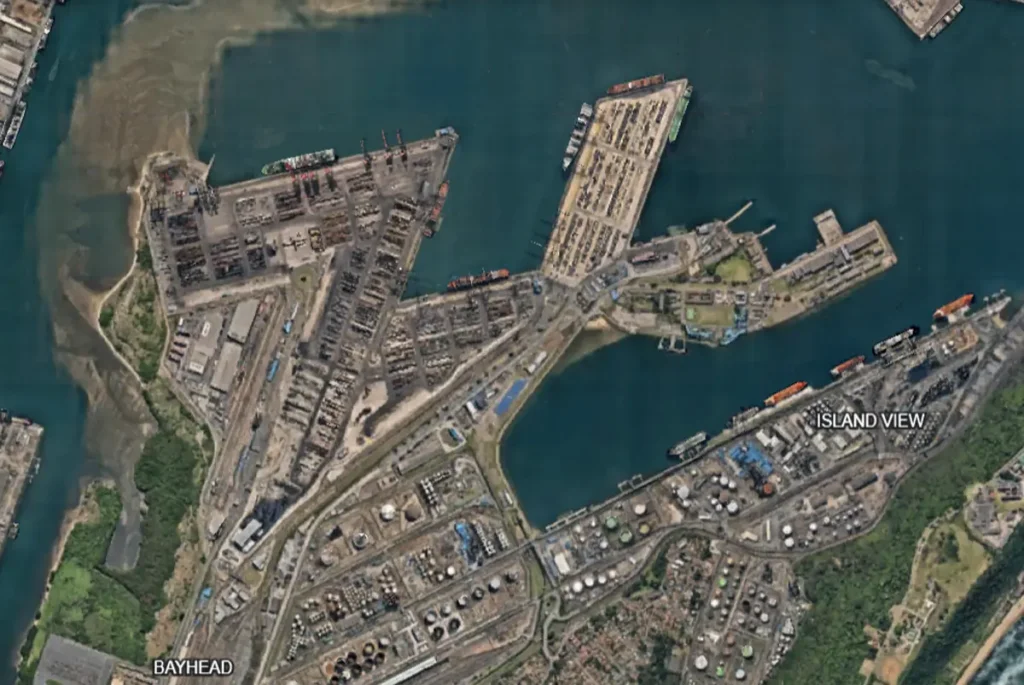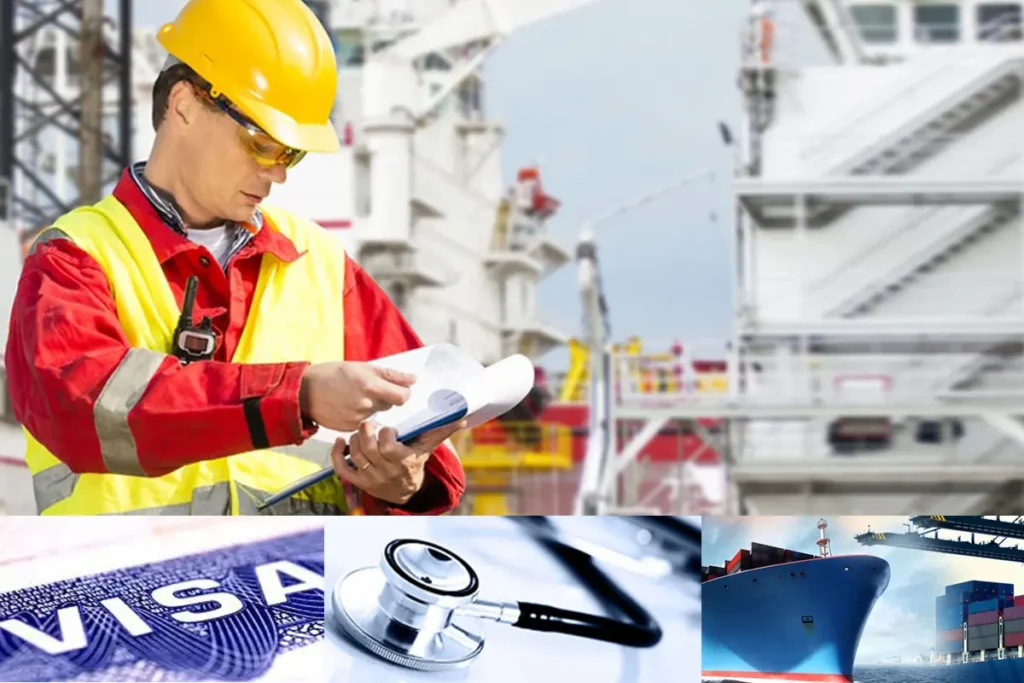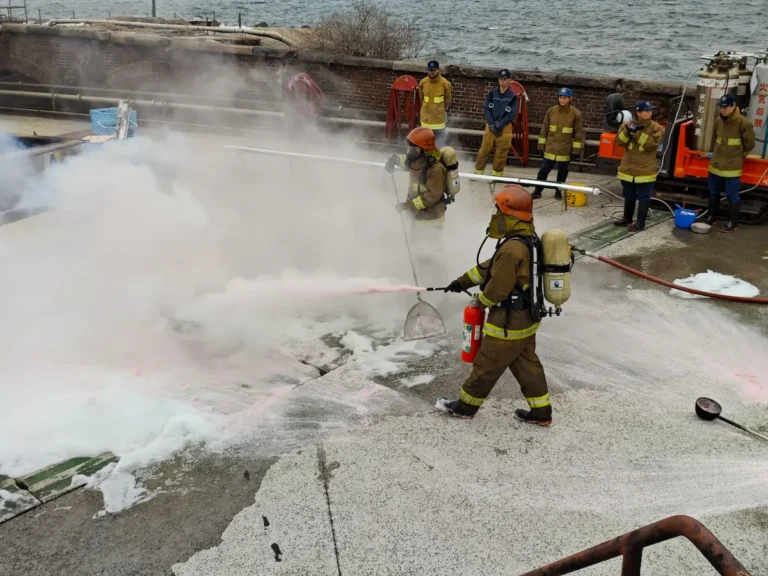In their Safety and Shipping Review 2025 report, Allianz Commercial highlights that the global shipping fleet losses have dropped by 87% from around 200+ ships in the 1990s to a record low of 27 as of the end of 2024.. 🙂
While this is a commendable decrease, the latest fire on the Wan Hai 503 off the coast of India on the 9th of June 2025, serves as a jarring reminder that fewer incidents does not mean lesser risk..
Behind the decline in ship losses lies a more dangerous, less visible threat: onboard fires, particularly those caused by hazardous, flammable, or mis-declared cargo..
“Fires and mis-declared cargo remain the top large vessel concerns: Large vessel fires, particularly on container ships, car carriers and Ro-Ros, are still a major concern for insurers,” the Allianz report read..
“The reality is the risk remains significant due to the size of these ships and the complexities involved in firefighting and salvage. Allianz analysis revealed a decade-high number of fires across all vessel types in 2024, with 30% involving container, cargo, or ro-ro vessels,” the report added..
These are not mere statistics—they are a flashing red signal for an industry pushing ever-larger ships into denser routes, while still grappling with cargo transparency and firefighting limitations..
The Wan Hai 503 incident
On Monday, 9 June 2025, just days after the MSC ELSA 3 sank off Kerala, the Singapore-flagged Wan Hai 503 was engulfed in flames approximately 70 nautical miles off the Beypore–Azhikode stretch of India’s Arabian Sea coastline..
The vessel, en route from Colombo to Mumbai, reported a sudden explosion followed by a massive blaze in the cargo area, forcing the crew to abandon ship.. 18 out of 22 crew members were rescued by the Indian Navy and Coast Guard in a swift and well-coordinated operation involving helicopters, aircraft, and lifeboats..
As of this writing, 4 crew members remain missing, and several containers have been lost at sea.. Authorities confirmed that the vessel was carrying classified hazardous and flammable goods, although the nature and declaration status of these materials remain under investigation..
ANI has reported that “The inputs of the incident were received at IFC IOR at about 0930 hr on June 9. INS Surat and a Dornier aircraft were immediately deployed by the Indian Navy to render necessary assistance, and at about 1630 hr, 18 out of 22 crew members were safely rescued by Surat. First aid has been rendered to the injured crew members, and the ship is presently proceeding to New Mangalore for disembarkation and further medical management,” the Navy said in a statement.
Authorities are currently verifying the specifics of the cargo onboard to better understand the cause of the fire and evaluate the associated risks to firefighting teams..
The Singapore High Commissioner, Simon Wong, expressed gratitude towards the Indian Navy and Coast Guard “Professional and rapid response of the Indian Coast Guard and the Indian Navy. Praying that remaining crew are found soon,” Wong said in a post on X.
In their statement, MPA expressed its appreciation to the Indian authorities for their swift response in recovering the 18 crew and for their support for the ongoing SAR operations.
The vessel’s owners have been instructed to urgently engage a certified salvor and firefighting specialist, and it is understood that Bernhard Schulte Shipmanagement (BSM), the ship manager, is coordinating with the Indian Coast Guard by sharing relevant vessel data..
With the fire reportedly consuming the entire ship, authorities have requested the owners to confirm cargo details and identify any hazardous materials onboard..
BSM has also initiated preliminary contact with SMIT Salvage to provide expert salvage support..
This slideshow requires JavaScript.
Familiar disaster, different year
The Wan Hai 503 incident echoes some of the industry’s most catastrophic maritime disasters in recent memory..
Maersk Honam (2018), X-Press Pearl (2021), Fremantle Highway (2023), MSC Elsa (2025), and most recently Morning Midas (2025), are some of the recent incidents involving ship fires..
As per many seafarers, ship fires are often difficult to detect, nearly impossible to extinguish quickly, and exponentially more dangerous due to the size of modern container vessels..
Once ablaze, a ship can become a floating inferno where firefighting from both the crew and external responders is hindered by the complexity of the cargo hold layout and the sheer volume of containers..
Safety paradox: fewer losses, more complexity
While the reduction in annual ship losses is commendable, the Wan Hai 503 fire reveals a safety paradox.. We may be losing fewer ships numerically, but the scale, complexity, and cost of each disaster seems to be growing, especially when fires are involved..
When cargo is misdeclared, or when dangerous goods are loaded without proper segregation or documentation, it creates a lethal vulnerability.. And with modern vessels now carrying upwards of 20,000 containers, even a single container’s failure can lead to catastrophe..
Commendable response and recurring lessons
India’s rapid mobilisation—led by the Navy and Coast Guard—demonstrated how well-trained emergency teams can save lives.. Within hours, aircraft were dispatched, life rafts were dropped, and naval ships coordinated search and rescue missions under challenging conditions..
But as praiseworthy as the response was, prevention must be the priority.. The industry cannot continue to operate on the edge of reaction when fires at sea are not a matter of if, but when..
In light of this, it is time for the shipping industry and regulators to seriously address:
- Stricter enforcement of dangerous goods declaration at all levels..
- Real-time cargo visibility, especially for high-risk goods..
- Upgraded fire detection and suppression systems on all large vessels..
- Specialised crew training for onboard fire management and hazardous cargo handling..
- Standardised global reporting on incidents involving fire or misdeclared cargo to share learnings and prevent recurrence..
With 90% of global trade moving by sea, maritime safety is not just a logistics issue, it is a lifeline for economies, supply chains, and human lives..














